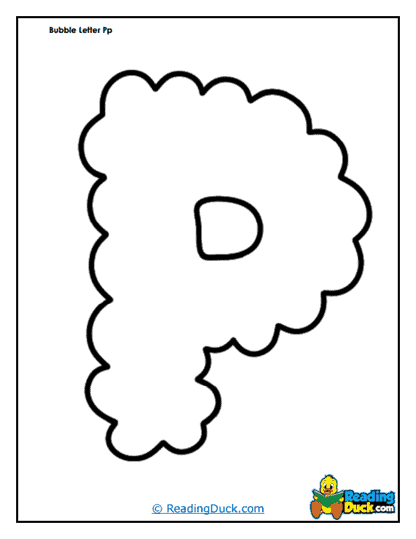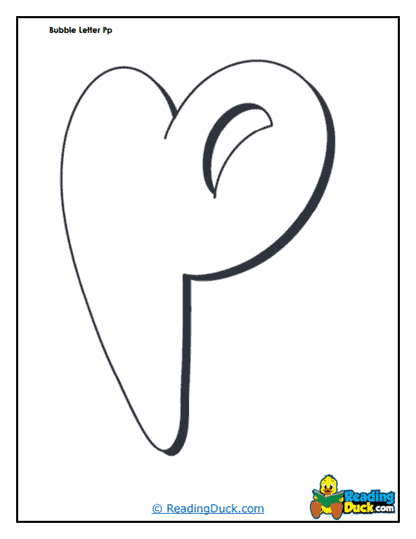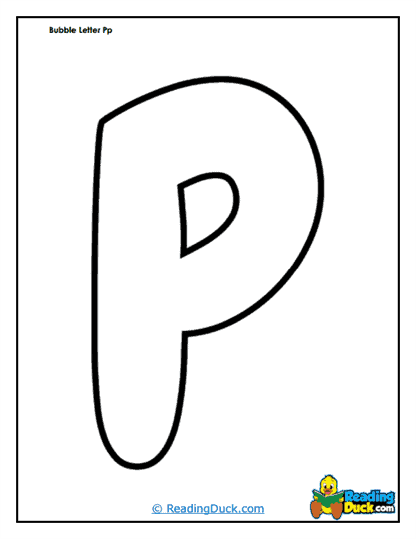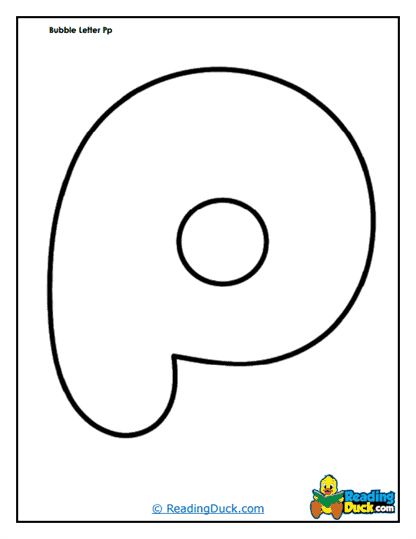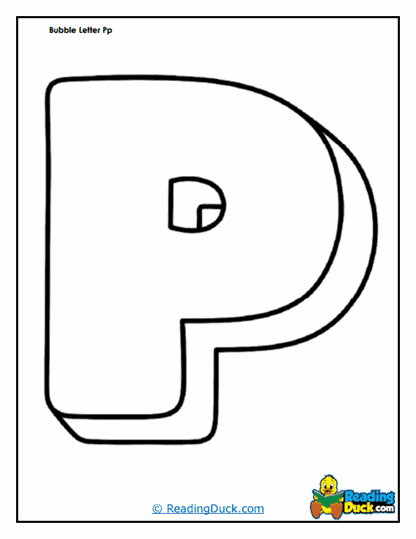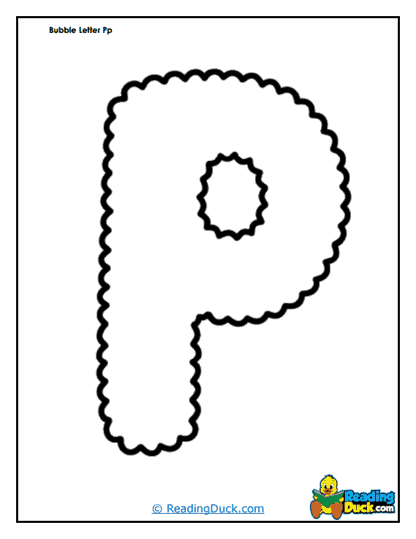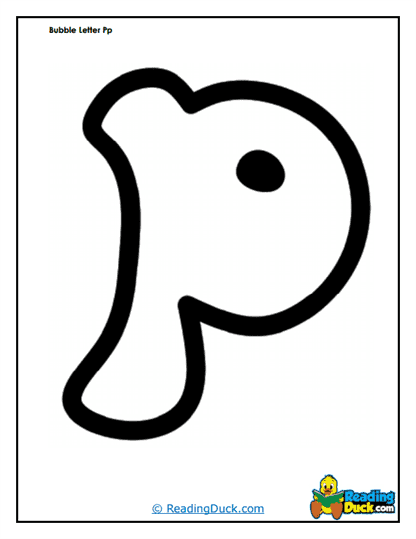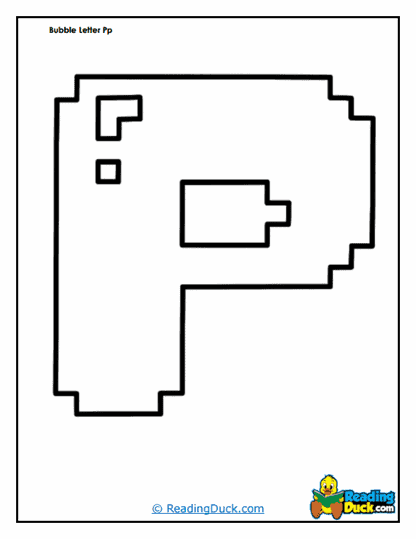Bubble Letter Pp Worksheets
About Our Bubble Letter Pp Worksheets
This is an engaging collection for young learners to develop their familiarity with the letter "Pp" through interactive and creative exercises. These worksheets prominently feature large, outlined versions of the uppercase "P" and lowercase "p," often referred to as "bubble letters," which invite children to trace, color, or decorate the letters. This hands-on approach transforms what might otherwise be a routine activity into a multisensory learning experience. By incorporating bright colors, themed designs, or even prompts to add textures like glitter or stickers, these worksheets capture children's attention and make letter-learning more enjoyable. The visual and tactile interaction helps reinforce letter shapes in a way that aligns with developmental milestones in fine motor skills and visual recognition.
Beyond simple letter tracing, bubble letter "Pp" worksheets can support broader literacy skills by embedding the letter into a meaningful context. For example, the worksheets may include exercises that connect the letter "Pp" to words and images, such as "penguin," "piano," or "pumpkin." This connection between letters and their associated sounds encourages phonemic awareness, a crucial precursor to reading proficiency. Additionally, some worksheets may integrate playful activities like mazes, puzzles, or matching games that feature the letter "Pp," combining cognitive challenges with language learning. Such creative exercises not only teach children to recognize and write the letter but also foster a deeper understanding of how it functions within words and sentences. By incorporating these dynamic elements, these resources align well with modern educational approaches that emphasize active, play-based learning.
These worksheets are often essential components of early childhood education programs, whether in classrooms, homeschooling settings, or supplemental learning environments. They are designed not only to develop skills like handwriting and letter recognition but also to encourage independence and creativity in learning. Parents and educators often find that the worksheets can be adapted to suit individual learning paces, providing opportunities for differentiation. For instance, advanced learners might be challenged to use the letter "Pp" in sentence formation or word creation, while beginners focus on basic tracing and coloring. The versatility of these resources ensures that they can cater to a wide range of developmental needs, making them a cornerstone in building the literacy foundations necessary for future academic success.
How Parents Can Use These
Parents can incorporate bubble letter "Pp" worksheets into daily lessons to make learning both hands-on and enjoyable. Here's how students typically use these worksheets:
Tracing and Writing Practice
They will often feature dotted outlines within the large bubble letters, which guide students through the process of tracing. This structured tracing activity provides children with the opportunity to develop their fine motor skills by carefully following the dotted lines. Fine motor development is crucial for young learners, as it prepares their hands for more advanced writing tasks in the future. After tracing, many worksheets offer blank spaces where students can attempt to write the uppercase and lowercase forms of the letter "P" on their own. This freehand writing practice reinforces their understanding of the letter's structure and promotes confidence in their writing abilities. Over time, these exercises help children gain the precision and muscle memory needed to write neatly and consistently.
Coloring Activities
The large, open areas inside the bubble letters provide a perfect canvas for children to express their creativity through coloring. Coloring these letters not only makes the learning process more engaging but also allows students to focus on the shapes and curves of the letters in a fun way. As they color, children improve their hand-eye coordination, as they must stay within the lines and make deliberate movements with their crayons or markers. Additionally, educators or parents can use this activity to introduce color-based associations, such as asking children to color the letter "P" purple or the lowercase "p" pink, adding another layer of cognitive development. Coloring the bubble letters can also serve as a calming and stress-relieving activity, helping students remain focused and relaxed while they learn. This creative task ensures that the learning environment is enjoyable and fosters a positive attitude toward writing practice.
Letter Recognition Exercises
Our bubble letter series often includes activities designed to help students recognize and distinguish the letter "Pp" from other letters. For example, matching activities may ask children to pair the uppercase and lowercase forms of "P" or to identify the letter "P" hidden within a grid of other letters. These exercises challenge students to pay close attention to details, sharpening their ability to visually discriminate between similar shapes. Parents who homeschool can enhance these recognition activities by encouraging children to point out or circle specific occurrences of the letter "P" in printed materials like storybooks or magazines. Additionally, this practice helps students recognize the letter "P" in real-world contexts, making connections between what they learn in lessons and the words they see in everyday life. Repetition of these exercises ensures that the letter "P" becomes familiar and easy to identify, a crucial step in early literacy development.
Sound Association
Many bubble letter worksheets incorporate sound association activities to connect the letter "Pp" with its corresponding phoneme, the "puh" sound. These worksheets often include images or words that start with the letter "P," such as penguin, pizza, or panda, which reinforce the connection between the sound and the letter. Educators or parents can further enhance this activity by asking children to say the sound aloud each time they trace, write, or color the letter. This multisensory approach strengthens phonemic awareness, which is essential for learning to decode and read words. Sound association activities can also evolve into simple games, such as brainstorming other "P" words or finding objects in the room that start with the letter "P." These fun and interactive methods help children internalize the relationship between letters and sounds, forming a foundation for phonics and reading skills.
Phonics Development
Linking the letter "Pp" to its sound through images, words, and phonemic activities solidifies the connection between letters and the sounds they represent. This association is a key aspect of phonics, which plays a critical role in helping students decode words and improve their reading fluency. As students practice these sound associations, they also expand their vocabulary by learning new "P" words, which further supports language development.
